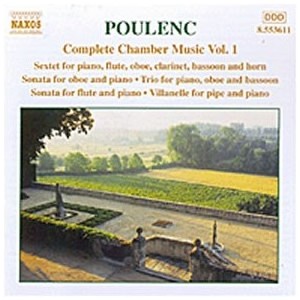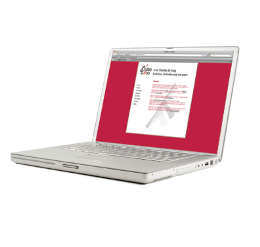FAQ
Producten uit dezelfde categorie:
-

Vivaldi -...
Bekijk -

Hindemith:...
Bekijk -

Devienne:...
Bekijk -

Schubert:...
Bekijk -

Carl...
Bekijk -

Oboe d'amore...
Bekijk -

The Russian...
Bekijk -

Prokofiev:...
Bekijk -

STAMITZ, C.:...
Bekijk -

BEETHOVEN /...
Bekijk -

MOZART: Oboe...
Bekijk -

Wolf-Ferrari...
Bekijk -

Schumann:...
Bekijk -

Music for...
Bekijk -

SAINT-SAENS:...
Bekijk -

Saint-Saëns:...
Bekijk -

Alwyn:...
Bekijk -

Arvo Pärt:...
Bekijk -

Berio:...
Bekijk -

Richard...
Bekijk -

Madrigal...
Bekijk -

Poulenc:...
Bekijk -

Oboe Quartets
Bekijk -

Orchestral...
Bekijk -

The Baroque...
Bekijk -

Telemann:...
Bekijk -

Heinz...
Bekijk -

Herbert von...
Bekijk -

Uw Jaar In...
Bekijk
Track Listing:
Poulenc, Francis
Sextet for Piano, Flute, Oboe, Clarinet, Basson and Horn
Bernold, Philippe, flute
Doise, Olivier, oboe
Joulain, Herve, horn
Spaendonck, Ronald van, clarinet
Tharaud, Alexandre, piano
Lefevre, Laurent, bassoon
1. Allegro vivace 00:07:46
2. Divertissement: Andantino 00:04:15
3. Finale: Prestissimo 00:05:30
Oboe Sonata
Doise, Olivier, oboe
Tharaud, Alexandre, piano
4. Elegie: Paisiblement 00:05:05
5. Scherzo: Tres anime 00:04:01
6. Deploration: Tres calme 00:04:43
Trio for Oboe, Bassoon and Piano
Doise, Olivier, oboe
Lefevre, Laurent, bassoon
Tharaud, Alexandre, piano
7. Presto: Lent - presto 00:05:28
8. Andante: Andante con moto 00:03:49
9. Rondo: Tres vif 00:03:21
Flute Sonata
Bernold, Philippe, flute
Tharaud, Alexandre, piano
10. Allegro malinconico 00:04:29
11. Cantilena: Assez lent 00:03:50
12. Presto giocoso 00:03:32
Villanelle
Bernold, Philippe, flute
Tharaud, Alexandre, piano
13. Villanelle 00:01:35
Total Playing Time: 00:57:24
'Francis Poulenc is music itself, I know no music more direct, more simply expressed nor which goes so unerringly to its target.' This praise from his friend, the composer Darius Milhaud, can only be equalled by that from Arthur Honegger who admired 'the man, a born composer,' who, 'in the midst of fashions, systems, prescriptions, has stayed true to himself with that rare courage which demands respect.'
A French musician par excellence, Francis Poulenc grew up in the heart of Paris, between the Madeleine ('my home town'), the Marais ('my village') and Nogent-sur-Mame ('my countryside... my paradise with its open-air cafés, its chip-sellers and its bals musettes'). A precocious pianist, his creativity fed on Debussy who had 'awakened him to music', Stravinsky whom 'he took as his guide', Ravel and, above all, Satie, who influenced him considerably 'more aesthetically than musically.' Though he considered Chabrier a 'grandad', the music-hall fascinated and enthralled him. For many years, Poulenc had to put up with being labelled a 'superficial' and 'light' composer. Nothing is further from the truth. His correspondence, collected by Myriam Chimènes, and the magnificent biography by Renaud Marchart, both bear witness to this. ' And his music remains brazenly up-to-date.'
From the first work that he dared make public, the Rapsodie nègre, at the advanced age of nineteen years, to the very last, the Sonata for clarinet and piano and Sonata for oboe and piano, completed shortly before his unexpected death, Francis Poulenc devoted himself intermittently to chamber music, sometimes following an urgent desire to write, sometimes in response to the wishes of virtuosi friends. He liked to say, 'To write what seems right to me, when I want to, that is my motto as a composer.'
Saturated with the Parisian excitement greeting the end of the Great War, Poulenc's first chamber works display 'the New Attitude', the often jocular musical vitality of the circle of friends which the critics referred to as the Groupe des Six. The Rapsodie nègre, the Sonata for two clarinets, the Piano Sonata for four hands, the Bestiaire and Cocardes were created by a man yet to reach his twentieth birthday, who, replying to a request from his London publisher, described himself as follows. 'I was born in Paris on 7th January 1899... I studied piano under Vines and composition almost solely through books because I was fearful of being influenced by a teacher I read a lot of music and greatly pondered musical aesthetics... My four favourite composers, my only masters, are Bach, Mozart, Satie and Stravinsky, I don't like Beethoven at all… I loathe Wagner ...In general, I am very eclectic, but while acknowledging that influence is a necessary thing, I hate those artists who dwell in the wake of the masters ... Now, a crucial point, I am not a Cubist musician, even less a Futurist and, of course, not an Impressionist. I am a musician without a label.' (Letter of 6th September 1919, quoted in Correspondence)
Trusting his instinct, Poulenc was 'like all Latins... more into harmony than counterpoint.' Though he had refused to join the Schola Cantorum or the Conservatoire, to increase his knowledge he turned to Charles Koechlin, a musician more renowned as a teacher than a composer. From the four years, 1921-25, when he concentrated on improving - among other things - his knowledge of counterpoint, Poulenc has left us a Sonata for Clarinet and Bassoon, a Sonata for Horn, Trumpet and Trombone and a Trio for Oboe, Bassoon and Piano. The chamber music was definitively associated with wind instruments.
Following a fairly long period when he moved away from the genre, Poulenc set out to write for strings and piano. The Sonata for Cello and Piano was first written in 1940 and reworked eight years later, whilst his Sonata for Violin and Piano was first performed in 1943 with Ginette Neveu. From this same period date L 'Histoire de Babar and Poulenc's collaboration with the dramatist Jean Anouilh, for whom he composed incidental music for Léocadia and L 'Invitation au Château. The start of the 1950s saw the creation of a profusion of pieces for two pianos for 'les boys', the American pianists Arthur Gold and Robert Fizdale: L 'Embarquement pour Cythère, a capriccio in the style of Le Bal masqué, the Sonata and the Elégie. From 1956 Poulenc renewed his relationship with the wind instruments, with an Elègie for Horn and Piano. 'I believe that specialising in the woodwind side is the solution for me at the moment,' he wrote to Pierre Bernac. Like Debussy and Saint-Saëns before him, at the height of his powers he composed three sonatas for wind instruments and piano. The Sonatas for Flute and Piano, for Clarinet and Piano and for Oboe and Piano each represent a poignant homage to a dear departed friend.
Contrary to the persistent assumption, Poulenc did not find writing easy. In this respect, the composition of the Sextet for piano, flute, oboe, clarinet, bassoon and horn is revealing. Six years after the 1933 performance, Poulenc took up again his 'old Sextet never published by Hansen', created at the time of Le Bal masqué. 'There were some good ideas in it but the whole thing was badly put together,' he explained to Nadia Boulanger. 'With the proportions altered, better balanced, it comes over very clearly.'
'Very fast and fiery,' the Allegro vivace dashes along in dazzling, energetic rhythms which give way to a slower section introduced by a lyrically melancholic bassoon. If The Rite is not far away, the sad sweet song, expressed by the piano and then by the different instruments, conceals a poignant poetry. The original pace returns, full of rhythmic phrases and vigour. The Divertissement, marked andantino, is written within a three-part slow-fast-slow structure whilst the Finale, a prestissimo in rondo form, exploits the different instrumental colours with gay generosity. This lively, warm surge where sparkling Stravinskian touches and sudden lyrical flights are intertwined, gives way to a coda with 'pretty and somewhat false chord progressions,' poignantly sad, with a tender and nostalgic sweetness. This Sextet is dedicated to Georges Salles, curator at the Louvre, who for some time accommodated Poulenc in his Montmartre residence.
Performed after the composer's death by Pierre Pierlot and Jacques Février, the Sonata for Oboe and Piano is one of Poulenc's last works. During his 'only real holiday of the year' at Bagnols-en-Forêt in 1962, he wrote to Pierre Bernac. 'I've sketched out quite a few things... I've found the makings of a Sonata for Oboe. The first section will be an elegy, the second a schelzando and the last a sort of liturgical chant.' Dedicated to the memory of Sergey Prokofiev, whom he had known in the 1920s and with whom he was equally content to sit at the piano or to play bridge, the Sonata for Oboe and Piano adopts a slow-fast-slow structure which contrasts with the classical sonata form. Both the initial Elegy, to be played 'peacefully' and the 'very animated' Scherzo take on an eloquent, simple yet sophisticated idiom. With its solemn introductory bars of solo piano, the third movement, Déploration, echoes the starkness of sacred works. The melancholic oboe unfolds its sad lament over the poetic, discreet nimbus of the piano.
'I quite like my Trio because it comes over clearly and is well balanced. For those who think I don't care about form, I wouldn't hesitate to reveal my secrets here: the first movement follows the plan of a Haydn allegro and the final Rondo that of the scherzo from the second movement of Saint-Saëns's Concerto for Piano and Orchestra.' (Entretiens) Announced and postponed so many times, the Trio for Piano, Oboe and Bassoon was born of years of labour in a period of stylistic searching. The first sketches date from 1921, the year when Poulenc looked to Charles Koechlin to improve his knowledge. The Trio was completed in 1926, about a year after the last lessons. 'I worked on it a lot. It's in a style new to me yet at the same time very Poulenc,' he wrote to the critic Paul Collaer in November 1924. The short introduction makes some use, with definite irony, of the elements of the French style of opening, whilst the witty Presto unveils at its heart a dreamy passage. The 'very sweet and melancholic' Andante is followed by a Rondo, 'which I hope is brilliant and joyful'.
During the summer of 1956, in response to a commission from the Elizabeth Sprague Coolidge Foundation, Francis Poulenc suggested as a chamber work, 'a Sonata for Flute and Piano dedicated to the memory of Mrs Coolidge. Much more at home with wind instruments than strings, I admit I am tempted by this combination.' (Letter to Harold Spivacke, Summer 1956.) After the Milan performance of the Dialogues des carmélites, enjoying the sublime weather and solitude of Cannes, Poulenc took up his 1952 sketches again to create this Sonata for Flute. 'I have the impression of going back a long way as far as the technique is concerned, of course,' he wrote to Pierre Bernac. And to his first biographer, Henry Hell, he stressed. 'The form that I chose for this work is quite close to that of Debussy's sonatas, that's to say, very free. ..There is an Allegretto melancolico, a cantilena and I still have to do a Presto giocoso. The writing is simple but subtle and the harmony recalls Soeur Constance.' It was completed just a month before its first performance given by the composer and Jean-Pierre Rampal at the Strasbourg Festival.
The short Villanelle, composed in 1934 and dedicated to Mrs Dyer, was written for a collection of works for pipe and piano and embraces the popular, spontaneous style of its Neapolitan origins. This siciliano may also be played as a pipe solo. For this production a recorder was used.
Translation: Wil Gowans
Alexandre Tharaud
At seventeen years of age, Alexandre Tharaud was already making a name for himself at the Paris Conservatoire. His remarkable performances in various international competitions, including Citrà di Senigallia in Italy and Munich-first and second prize respectively-marked the debut of an international career. He has made numerous tours of Asia and North America as well as France, where he has been heard at the Chopin Festivals in Montpellier and La Roque d' Anthéron. At the invitation of Georges Pretre, he played Poulenc's Piano Concerto with the Orchestre National de France on the centenary of Poulenc's birthday.
Philippe Bernold
The winner of the 1987 Jean-Pierre Rampal international flute competition, Philippe Bernold is, today considered one of the jewels among French flautists. He very soon set off on a remarkable career alongside such prestigious musicians as Mstislav Rostropovitch and Jean-Pierre Rampal. In Lyon, John Eliot Gardiner, the then conductor of the Orchestre de l’Opéra National, gave him the principal flute desk. Philippe Bernold is also a much sought-after teacher and now teaches flute at the Conservatoire in Lyon.
Olivier Doise
Olivier Doise first set out on his brilliant way as the unanimously elected winner of first prize for oboe in M. Bourgue's class at the Paris Conservatoire. He was subsequently appointed principal oboe of the Orchestre de l'Opéra de Paris. Olivier Doise has a no less outstanding career as a chamber musician, both abroad and in France; he is also a member of the Paris-Bastille Wind Octet.
Ronald Van Spaendonck
Born in Namur in 1970, Ronald Van Spaendonck is considered one of the most promising clarinettists of his generation, From 1987 he accumulated national awards and became Laureat Juventus in 1991, In the field of chamber music, he has appeared with the violinist Gidon Kremer at the Paris Theatre de Ville and he regularly plays with the Takács and Skampa String Quartets.
Laurent Lefèvre
At first a member of the Quintette Debussy, having gained the highest distinctions for bassoon at the Paris Conservatoire and in prestigious international competitions, Laurent Lefèvre became principal bassoon of the Orchestre de l'Opéra de Paris. More recently he has been nominated professor at the Lyon Conservatoire. At the same time he appears in concerts around the world with the Paris-Bastille Wind Octet.
Hervé Joulain
Principal horn of the Orchestre Philharmoniquede Radio France at the age of twenty, Hervé Joulain had the very early good fortune to play under great conductors including Leonard Bernstein, Marek Janowski and Lorin Maazel, Ten years later came his brilliant promotion to a similar position in the Orchestre National de France. His career has also led him to appear in chamber music with musicians of distinction such as Paul Tortelier, Michel Dalberto and Patrick Gallois.
- Aantal discs: 1
- Catalogus: 8.553611
- Componist: Francis Poulenc
- Duur: 57:24
- Formaat: CD
- Release datum: december 1999
- Spars Code: DDD
- Uitvoerenden: Bernold, Philippe, flute Doise, Olivier, oboe Joulain, Herve, horn Spaendonck, Ronald van, clarinet Tharaud, Alexandre, piano Lefevre, Laurent, bassoon
Sonata (1962) voor ...
Bekijken In winkelwagen Niet op voorraad
Sonata (1962) voor ...
Bekijken In winkelwagen Niet op voorraad
Sextour voor piano,...
Bekijken In winkelwagen Niet op voorraad
Nog geen recensies
Alleen geregistreerde gebruikers kunnen nieuw commentaar plaatsen.










